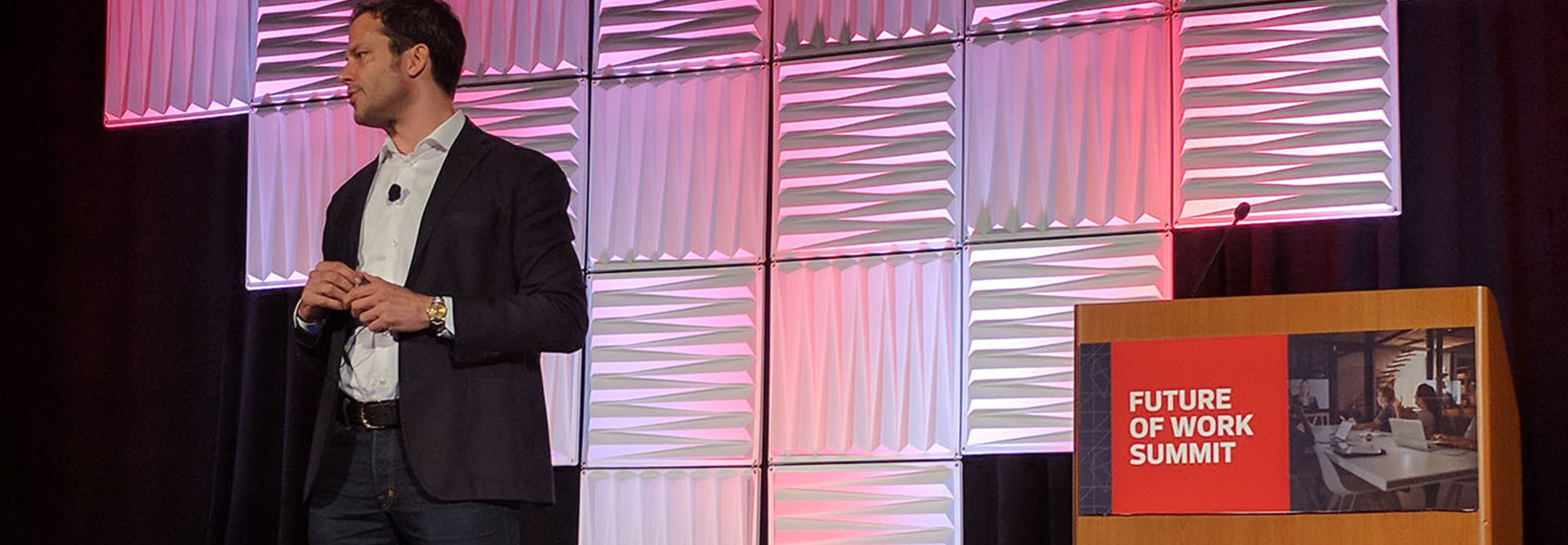Why the Move to Innovative Workplace IT Is Essential for Business Survival
“If it ain’t broke, don’t fix it,” they say. But for information technology and innovation, that type of thinking can spell disaster.
“Success by its very nature tends to bring complacency,” said business performance expert Ryan Estis, speaking at CDW’s Future of Work SummIT in Atlanta on Monday. He pointed to companies including Blockbuster, Kodak and Lehman Brothers, all of which once represented the epitome of success but eventually stagnated.
As the pace of change increases over the next five years, companies will need to keep up with the technologies and capabilities customers are coming to expect. Creating a culture of innovation will also be central to retaining talent as younger generations come to expect more agile workplace models and tools.
QUIKRETE Embraces Collaboration to Fuel Innovative IT
Those who are least willing to innovate are often companies that don’t believe they have a reason to. This was somewhat the case for The QUIKRETE Companies, a family-owned and operated concrete and cement manufacturer that had experienced substantial growth since its founding in 1940.
When Jay Ferro came on in 2018 as the company’s first CIO, he found that the role of IT had plateaued even as the company flourished.
“It’s very common: You’ve had tremendous success, you’ve had tremendous growth, people seem pretty happy. Why would we change?” he said, speaking at the summit about the “profitable mediocrity” that he thinks many companies fall into.
At QUIKRETE, he found that acquisitions and growth had left IT somewhat fragmented, with different federated IT organizations under one umbrella. Moreover, the company still largely relied on more traditional methods of collaborating, such as email and conference calls.
Using new collaboration tools including Office 365 and Microsoft Teams as a springboard, Ferro is now seeking to move the company’s IT strategy away from “firefighting” and into an era of innovation that will help it continue to thrive.
After pivoting to more effective collaboration technology, much of the work is aimed at teaching QUIKRETE staff “a new and better way to work,” said Ferro. “For a lot of older companies, email is your filing system, file shares go back to the dawn of time. All of this knowledge, 99.9 percent of it is absolutely useless. We’re teaching them to work a different way.”
4 Tips to Affect a Culture of IT Innovation
Technology is often the easiest part of making a change to IT. To make the move to new tools effectively, Ferro, who has worked as CIO for several successful organizations, recommends three tactics for IT leaders.
1. Do no harm. It can be easy for CIOs to want to implement processes they think will work, but undue change might cause unnecessary and difficult disruption. For this reason, CIOs and IT leaders should “find out what’s working” before pushing for change.
2. Assess talent quickly. Plug gaps in staffing, gain an understanding of workflows and processes and, from that talent pool, find champions for change.
3. Look for quick wins. For big projects to succeed, little ones need to as well. Quick wins can build morale and lay the foundation for bigger projects.
4. Form relationships with other departments. It’s more important than ever that IT not be siloed. IT should be an effective partner to every department to better understand what staff and management expect and gain buy-in on projects.
Ultimately, while laying this foundation for collaboration may be difficult both culturally and technically, it is necessary.
“For your organization to thrive in 2025, as an IT leader, you have got to initiate continuous reinvention,” said Estis. “You are the de facto agent of change because technology is changing how we work.”
Check out our event page for more articles and videos from the CDW Future of Work SummIT.









